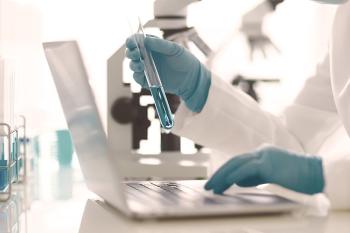Pharma Industry’s Feel Good Factor
07.10.2015 -
(CHEManager International 10/2015) Prescription Drug Sales in 2014 The pharmaceutical industry is entering a period of sustained growth. This is the result of the World Preview 2015 report, recently published by EvaluatePharma (see also our article on page 14), showing prescription drug sales are set to advance at almost 5% a year until 2020. In 2014 oncology remained the largest therapeutic category with sales growing by 8% to $79.2 billion and accounting for 10.1% of the total prescription and over-the-counter (OTC) drugs market (fig. 1). Antivirals expanded the most, by 55% to $48.8 billion, in 2014 largely due to recently launched hepatitis C products from Gilead and Johnson & Johnson, which collectively recorded sales of over $14.5 billion in 2014. The MS therapies segment also performed well with 20% growth over the year driven by products from Biogen and Novartis.

Prescription Drug Sales in 2020 Oncology is likely to remain the largest segment in 2020 with an expected annual growth of 11.6% per year and reaching $153.1 billion in 2020 (fig. 2). Growth from in-line products and potential new entrants is expected to more than compensate for a number of key patent expiries between 2014 and 2020. Anti-diabetics is forecast to be the second biggest therapy area with sales of $60.5 billion in 2020, less than half that of oncology. Overall, the cancer market is expected to expand by an average 10% per year between 2014 and 2020 to $153.1 billion, with worldwide sales of the new PD-1 products accounting for over $17 billion, or 23%, of this growth. Although Roche is expected to remain the market-leader through 2020, the company’s market share is forecast to decline by 14%, caused by competitor products and biosimilars.

R&D Spend by Pharma & Biotech Companies Global pharmaceutical R&D totaled $141.6 billion in 2014, representing an increase of 3.1% on the previous year. Overall, total R&D spend is forecast to grow at a rate of 2.0% per year, compared with the compound annual growth rate of 3.4% between 2006 and 2014, reaching $159.8 billion in 2020 (fig. 3). The spend per new molecular entity (NME), based on a three-year lag period between R&D expenditure and NME approval, was $2.7 billion per NME in 2014. This fall in spend per NME indicates increased productivity within the industry. Novartis is expected to spend the most on research and development in 2020, with a spend of $10.5 billion in 2020. Of the top 20, Celgene is forecast to grow its R&D expense the most rapidly, with R&D forecast to increase 10% per year from $1.8 billion to $3.3 billion in 2020.

Biotech vs. Conventional Technology Although the percentage sales from biotechnology products (bioengineered vaccines & biologics), within the world’s top 100, is set to increase from 44% in 2014 to 46% in 2020, this is lower than the 52% predicted in last year’s World Preview. This is partly due to a number of key biotechnology products falling out of the top 100 after suffering significant forecast downgrades over the course of the year. Concurrently, a number of conventional drugs have had their forecasts upgraded, thereby increasing their contribution to the total value of the top 100 drugs in 2020. In the broader market, sales from biotechnology products are expected to account for 27% of the world’s pharmaceutical sales by 2020 versus the current share of 23% in 2014.












